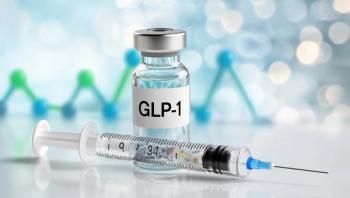
Navigating New FDA Guidance on Preapproval Payer–Manufacturer Communications
In light of recent guidance from the FDA on appropriate communications between payers and drug manufacturers prior to a drug's approval, a panel of stakeholders at the Academy of Managed Care Pharmacy 2017 Nexus meeting, discussed how these new guidelines can raise as many questions as they answer.
In light of recent guidance from the FDA on appropriate communications between payers and drug manufacturers prior to a drug’s approval, a panel of stakeholders at the Academy of Managed Care Pharmacy 2017 Nexus meeting, held in Dallas, Texas, discussed how these new guidelines can raise as many questions as they answer.
Soumi Saha, PharmD, JD, director of Pharmacy and Regulatory Affairs for AMCP, began the session by providing some background on the implications of the guidance and why it is necessary in today’s healthcare landscape. Payers and other healthcare decision makers need thorough healthcare economic information (HCEI) on a potential new drug’s budgetary impact and treatment population in order to plan and budget their resources. Additionally, this information is even more critical for those in value-based payment initiatives, as they cannot enter into outcomes-based contracts without it, Saha explained.
The current regulations regarding payer­—manufacturer communications were issued in section 114 of the Food and Drug Administration Modernization Act (FDAMA) of 1997, and they narrowly defined the appropriate recipients and scope of HCEI that was allowable from drug makers. Saha pointed to surveys that found that 64% of payers perceived a gap between the information they needed and what they received, and 91% of manufacturers said it was difficult to have their HCEI materials approved under FDAMA.
With these shortcomings in mind, AMCP developed consensus recommendations from stakeholders on ways to improve the FDA’s regulation of this communication. Essentially, they sought a “safe harbor” that would allow manufacturers to proactively share clinical and economic information with decision makers 12 to 18 months before a drug’s approval, Saha said.
The next panelist, Mark Gaydos, BA, vice president of NA General Medicine and Established Products at Sanofi, picked up the conversation by discussing the situation after FDAMA. He said he was not aware of any enforcement letters that had been sent by the FDA regarding formulary communications, and that it would have been difficult for the FDA’s Office of Prescription Drug Promotion to write such letters anyway, considering the lack of clarity in the rules, unless the communication had committed an egregious violation like making false statements. Since then, however, the context has changed.
“In the last 5 years, payer communications have become front and center in a way they haven’t before,” Gaydos explained.
He pointed to the 21st Century Cures Act, passed in 2016, which amended FDAMA to expand the audience for communications and allow dissemination of the underlying clinical information supporting economic comparisons. Then, 2 days before the inauguration of President Donald Trump in January 2017, the FDA under the outgoing administration released 2 draft guidance documents and a memorandum on the issue.
The draft guidance on
Jay Jackson, PharmD, MPH, senior vice president of Consulting Services at Xcenda, provided more insight on how manufacturers are using the updated guidance to change how they generate HCEI. It is important for companies to establish standards on the scope of the data they will present, the scientific evidence supporting it, and how it should be presented, in a process he called “beginning with the end in mind.”
For instance, payers report perceiving information coming from outcomes liaisons or medical science liaisons as more reliable than information presented by pharmaceutical sales representatives. And while it is important to provide context and disclosures, it needs to be balanced so that the disclosures do not overshadow the actual content being communicated.
“I think we’re moving in the right direction,” Jackson said. “We’re not even 1 year into this, but I do think there’s increased knowledge of how to handle” HCEI both proactively and reactively. He referenced the multidisciplinary collaboration between market access experts and health economics outcomes researchers as a positive step, and advised companies not to wait for the FDA’s guidance to be finalized before developing a strategy for communications with payers.
Finally, Kat Wolf Khatchatourian, PharmD, MBA, vice president of Pharmacy Services, Strategy and Delegation Oversight at QualChoice Health Plan Services, discussed her experiences with HCEI communications from the Medicare managed care pharmacy planning and forecasting perspective. Because formularies and rate filings are locked in by June for the next year, they cannot be adjusted to account for any additional products that are approved later on in the year. As such, plans are “perpetually playing catch-up with the innovation that’s coming to market.”
This “catching up” is complicated by additional considerations like off-label uses or dosing adjustments, Khatchatourian said. She called for additional legislation that “would improve both the timing and the quality of information that’s able to be exchanged and enable a safe harbor where people are not fearful” of sharing information.
In the meantime, she said, stakeholders cannot wait for the guidelines to be finalized by the FDA, as incorporating HCEI into decision making can improve clinical outcomes and result in administrative cost savings.
“As we learn along the way, we need to refresh our analyses and identify what additional opportunities may exist in order to ultimately improve communication and improve the healthcare landscape,” she concluded.
Newsletter
Stay ahead of policy, cost, and value—subscribe to AJMC for expert insights at the intersection of clinical care and health economics.















































